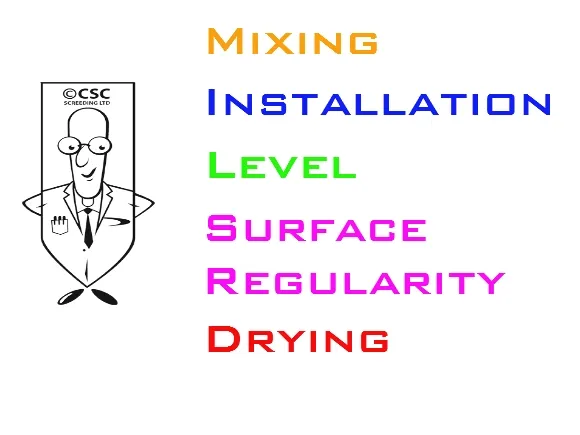
4 Quick tips for screed that lasts a lifetime
Cracking, curling, debonding, and crumbling are usually associated with screed defects. Although some of these issues can be fixed, it is always better to prevent than to repair. When it comes to floor screeding, prevention refers to five different aspects:
1. Mixing
Depending on project specifications, screeders can choose between site- and ready-mixed screeds. While ready-mixed screeds can ensure a certain quality, they come pre-mixed with aggregates and admixtures, which may negatively affect project budgets and timescales along with screed compaction and surface regularity parameters. Conversely, when site-mixed screeds are used, screed mixing techniques should be carefully assessed. Although hand mixing is more convenient than machine mixing, especially when forced-action mixers are unavailable on site, it may deliver poor-quality screeds due to insufficient mixing, wrong cement-to-sand ratios, and batch-to-batch variations. Additionally, screeds should never be mixed with cement mixers. Because these mixers fail to blend cement, aggregates, admixtures, and water homogeneously, the resulting compound is usually of poor quality.
2. Installation
Screed installation actually refers to laying and compacting floor screeds. For perfect results, the screed should be laid whilst it is still wet. To ensure adequate compaction through the depth of the screed, screeds thicker than 75mm should be applied in consecutive layers.
3. Level and surface regularity
Typically, departure from the datum level is measured with laser levels, which can help eliminate the risk of errors by yielding accurate measurements and recording multiple results automatically. Surface regularity is verified with a 2m straight edge, placed on the floor. Permissible departure from the straight edge ranges from 3mm (SR1) to 10mm (SR3). Floor-levelling compounds can be used to correct most flatness and surface regularity issues.
4. Drying
Depending on the type of screed formulation selected, the drying period may range from several days to several months. Whilst 75mm screeds mixed in a 1:4 or 1:5 cement-to-sand ratio take around 110 days to dry, in ideal ambient weather conditions, 60mm free-flowing anhydrite screeds require 80 days. Additionally, fast-drying screeds take between 3 and 21 days for complete drying.Getting the right screed for a construction project is almost impossible without paying attention to all these points. For additional information regarding screed mixing, installation, levelling, drying, and protection, you are welcome to contact our team at BuilderScreed or download our free guide “6 tips for a perfect screed and underfloor heating”. BuilderScreed is a division of CSCScreeding Ltd.
